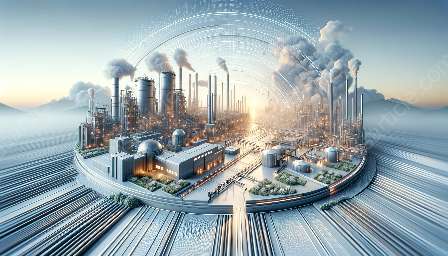Digitization has become a key component of modern factories and industries, revolutionizing the way processes are managed, products are manufactured, and businesses are operated. This topic cluster explores the fundamentals of industrial digitization, its impact on factories and industries, and the various technologies and trends driving this transformation.
Digital Transformation in Factories and Industries
Industrial digitization, also known as Industry 4.0 or the Industrial Internet of Things (IIoT), refers to the integration of digital technologies into industrial processes and systems. This transformation encompasses the use of advanced data analytics, robotics, artificial intelligence, and internet-connected devices to optimize operations, improve efficiency, and enable new business models.
One of the key aspects of digital transformation in factories and industries is the concept of smart manufacturing, which involves the use of interconnected systems and intelligent automation to create a more agile and responsive production environment. This shift towards smart manufacturing has the potential to revolutionize how products are designed, produced, and delivered to the market.
Impact of Industrial Digitization
Industrial digitization has far-reaching implications for factories and industries, influencing various aspects of operations, supply chain management, and customer engagement. This trend is reshaping traditional manufacturing processes and enabling new capabilities, such as predictive maintenance, real-time monitoring, and remote diagnostics.
From a strategic perspective, industrial digitization enables companies to gain greater insights into their operations, allowing for data-driven decision-making and the identification of opportunities for optimization and innovation. This shift has the potential to improve overall efficiency, reduce downtime, and enhance the quality of products, ultimately leading to competitive advantages in the marketplace.
Technologies Driving Industrial Digitization
A wide range of technologies contributes to the advancement of industrial digitization, with each playing a crucial role in enabling a more connected and automated industrial ecosystem. These technologies include:
- Internet of Things (IoT) - IoT devices and sensors are used to collect and transmit data from industrial equipment, enabling real-time monitoring and analysis of operational performance.
- Artificial Intelligence (AI) - AI algorithms are utilized to automate decision-making processes, optimize production workflows, and enhance predictive maintenance capabilities.
- Robotics and Automation - Robotics and automation technologies are employed to streamline production processes, improve precision, and reduce human intervention in repetitive tasks.
- Data Analytics - Advanced analytics tools are used to extract actionable insights from large volumes of industrial data, enabling better decision-making and process optimization.
- Cyber-Physical Systems - The integration of physical machinery with digital technologies creates cyber-physical systems that enable seamless communication and coordination within the industrial environment.
- Cloud Computing - Cloud-based platforms provide scalable and secure infrastructure for storing and analyzing industrial data, facilitating remote access and collaboration.
Emerging Trends in Industrial Digitization
As industrial digitization continues to evolve, several emerging trends are shaping the future of factories and industries. These trends include:
- Edge Computing - The adoption of edge computing technologies allows for data processing and analysis to be performed closer to the source, enabling faster decision-making and reducing reliance on centralized infrastructure.
- 5G Connectivity - The rollout of 5G networks enables high-speed, low-latency communication, unlocking new opportunities for real-time monitoring, control, and connectivity in industrial environments.
- Digital Twins - Digital twin models create virtual replicas of physical assets and systems, enabling simulation, monitoring, and predictive maintenance to optimize performance and reliability.
- Blockchain Technology - Blockchain offers transparent and secure data management, facilitating trusted transactions, provenance tracking, and supply chain management in industrial settings.
- Circular Economy Initiatives - Embracing circular economy principles, such as resource efficiency and waste reduction, is becoming a key focus for industrial digitization to minimize the environmental impact of manufacturing processes.
- Augmented Reality (AR) and Virtual Reality (VR) - AR and VR technologies are being leveraged to enhance training, maintenance, and visualization of complex industrial processes, improving productivity and safety.
Conclusion
Industrial digitization is redefining the landscape of factories and industries, ushering in a new era of connected, intelligent, and efficient production environments. By leveraging advanced technologies and embracing digital transformation, organizations can unlock tremendous potential for innovation, agility, and competitiveness in the evolving industrial ecosystem.

